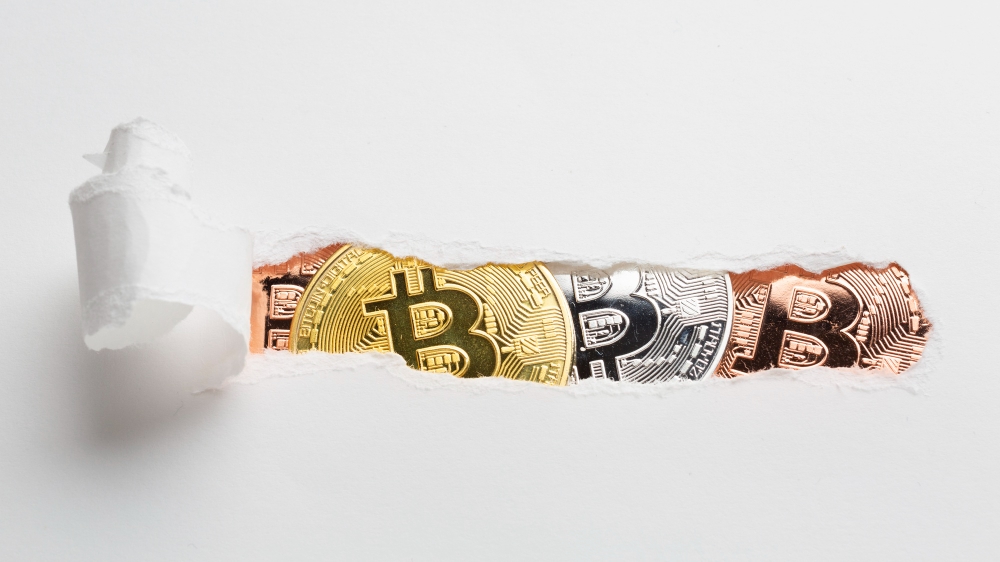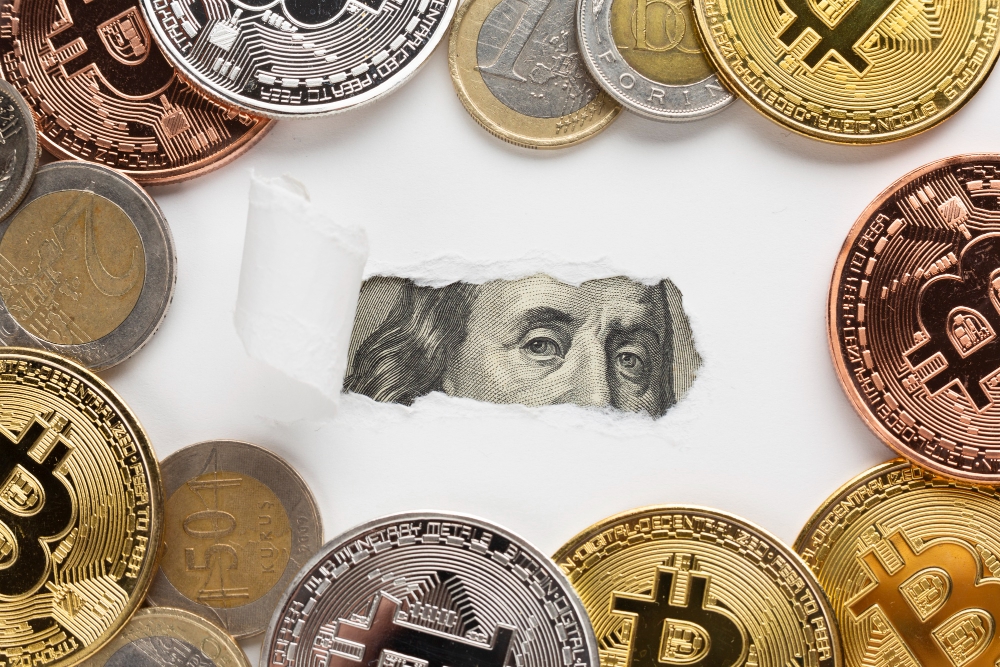
The economy enters a new era of technologies and it’s quite difficult to determine which asset is more preferable to be chosen: digital or fiat. Let’s review both downsides and benefits of each asset to define the current situation between these different types of currency.
Defining the Fiat money
First of all, Fiat currencies have no intrinsic value: the worth of such money is estimated and set by regulations of the government. After the establishment is executed, fiat currencies have legal rights to be used within financial transactions.

The state of these currencies is supported by people who trust those who launched this money: the more the trust – the stronger the position. There is no physical influence on it whatsoever – items don’t play a significant part in the fiat currency state.
However, there are Central banks which are monitoring the situation of the currency and do everything to prevent money from extreme conditions, such as inflation. For example, the increase of interest rates which affect the amount of borrowing and possible investments. That kind of change helps to decrease the overall economic downfalls and the inflation impact on the fiat money state.
Central banks influence
Not only raising the interest rates is the Central Bank’s responsibility. There are multiple tasks which are executed by them:
- Issuance. Production and release of the currencies.
- Monetary policy. Control over the supply, stability and behaviour of the money within the market.
- Creditor of last instance. Emergency backup system in case of economic downfalls.
- Overwatching and regulating the banking sector.
- Foreign exchange control which is executed by supporting the currency’s value and the international trading itself.
- Open market impact which can be provided by buying or selling government bonds.
- Making the financial field stable by analysing the market and preventing it from crisis.
- Verification of the system’s stability and security which directly impacts on the money efficiency within the transactions between people and business.

Together, these functions help to gain additional control of the economic situation, giving it a more stable environment by performing these tasks.
Commodity against Fiat
The first and main thing which separates these two types of assets: intrinsic value. Commodity money has it because of the undisputable connection to a physical item (Gold or Platinum, for example). Conversely, Fiat money fully depends on the people trusting in the provider of this type of asset, because it has no intrinsic value whatsoever.

This kind of physical independence is as good as bad. On the one hand, fiat money provides more operational room to central banks, which can influence economic conditions by multiple tasks. Commodity money is not able for such corrections. On the other hand, this level of adjustment is accompanied with risks: every single action can dramatically impact the state of the asset which may lead to economic destabilization or downfall.
As it stands, the digital era begins to consume the existing market and central banks evolve with the tendencies by building Central Bank Digital Currencies (CBDCs) which is a next step to support and maintain new conditions of the economy.
Stablecoins
On the one hand, the market has cryptocurrencies – highly volatile digital assets. On the other hand, there is fiat money which is much more stable due to its historical strong position.

That’s where the stablecoins makes a step in: providing to be the middle of both crypto and fiat currencies. Stablecoins are digital assets which are connected to existing fiat money. In case of emergency or a decrease, such a type of currency has a reserve which offers additional support to its value. The performance of stablecoins contains all the best features of both crypto and fiat assets:
- Speed of transactions.
- Security levels.
- Limitless crypto nature.
- Robust and reliable system.
There are several types of stablecoins which exist at the moment:
- Fiat-collateralized. It is supported with a fiat money reserve.

- Crypto-collateralized. It is supported with other crypto assets.

- Algorithmic. These work with smart contracts which provide the necessary amount of control over the stablecoin’s supply and demand.

Becoming more and more adapted to constantly evolving economic conditions, stablecoins gain more popularity: executing transactions with cryptocurrencies with no converting in fiat which is a very efficient feature. There is no need for any intermediaries.
Cryptocurrency definition
These digital assets are greatly more flexible than fiat money: it is a decentralized currency which provides users with the ability to transfer funds with no additional intermediaries. The principles of blockchain technology are gathered around high efficiency, security, transparency and permanency which drastically differs from existing fiat assets.

One of the biggest differences between crypto and fiat money: the amount of supply. In case of the digital asset: it is limited (BTC has a predetermined amount of 21 million BTC).
Such a feature provides crypto with protection from inflation which can affect fiat currency. That’s why during economic complications, BTC received a reputation of “digital gold” – it is limited and highly valued.
Moreover, several cryptocurrencies exist to provide solutions to complications within the blockchain and the digital economy itself – altcoins. There are different purposes which they are created for:
- Decentralized Apps – Ethereum.
- High speed of transactions – Litecoin.
- The higher amount of privacy – Monero.
These are just a few examples but cryptocurrencies execute many tasks within its ecosystem. Despite all the benefits of the decentralization which was created together with crypto assets, there was no control over the huge flow of funds: that’s another complication – regulations which can provide the assets with a much wider path to the world economy.
Crypto regulations
As crypto entered the economic field, several difficult tasks emerged and one of them is the regulation problem. Increased levels of uncertainty, which were created by countries disparity in the question, directly impacted on the crypto status: some nations decided to avoid digital asset’s implementation in the economy, some of them, conversely, accepted new currencies and released several regulations. Main of them are:
- Anti-Money Laundering and Know Your Customer protocols which together fight against illegal funding, fraud, scumming. The principle is simply: verify your identity and be transparent with your transactions.
- License and Registration. Several countries demand certain licenses or permissions from regulators to operate within the jurisdiction.
- Taxes. All the crypto activity can be obliged with taxes: trades, profits, mining rewards. The amount of taxes and which specific types of activity it is obliged to be paid for depends on the country’s conditions.
- Protection of consumers. It is a well-known requirement from many jurisdictions: transparency of the system, security measures – all of it must be followed to ensure the user’s safety.
- Securities. There are several cases when the crypto asset can be recognized as a security (For instance, those cryptos which were launched through ICOs). In that case, it is obliged to pay the existing tax for the security to avoid potential problems with the law of the nation.
- Financial market oversight. There are specific organizations which monitor the crypto platforms (For example, exchanges). These regulatory agencies detect potentially fraudulent activity or any attempt to manipulate the market.
- Payment services. Despite being illegal in several countries, crypto assets are part of the payment system in other ones. It means that digital currencies are obliged with all existing taxes, transaction limits and the necessary license demands from the country it is operated within.
- Blockchain and Smart Contracts. Together with innovations and constant development of these technologies, some nations require the transparency of all internal processes. It works like a preventive system for any potential illegal activity.

Together, all of these regulations are aimed to help the digital asset to enter the existing market flow smoothly. It is crucial to understand the innovations and inform all the participants of such regulations to make the system work efficiently.
Similarities and differences between fiat money and cryptocurrency
There are several similarities and differences between fiat currency and crypto assets. Both of them act as existing forms of money, but there are many crucial exceptional features of each one:
- Transferring. Crypto can be transferred at any moment to anyone with no additional intermediaries. Fiat money depends on the government and banks.
- Debt-based. Fiat currency is strongly tied to the debt principle: the central bank issues money to overcome the existing government’s debt. Crypto, on the other hand, is free from such economic models. The value is based on its utility and fixed amount of supply.
- Inflation control. Unlike fiat money, cryptocurrency can fight inflation in a significantly different way – halving. Bitcoin has a very efficient mechanism which executes the reduction of the rewards that miners gain per block. It slows down the new supply entering circulation.

Despite being able to represent money as fiat currency, crypto has significant initial differences and innovations within its working principles. Although both of them can act as a store of value, crypto is a drastically more decentralized asset than fiat money.
Existing trust
Despite all crypto innovations, fiat currency has a significantly larger trust base than its digital rival. Traditional assets are within the economy for a long time and the existing regulations together with central banks approval only makes this trust higher.
Rethinking
Fiat currencies in investment
Fiat money still has a significant role in the economy: the investments and saving strategies are based on them. The amount of stability and reliability it can provide during the economic complications is proven through the years and that’s why it is a most popular option for people who don’t want to engage with a high-risk investing activity.

Despite that stability, crypto assets are gaining more attention, because of its innovations. This approach, of course, will affect the existing economic system and the changes will be huge. It is all accompanied with new tasks to apprehend during the crypto integration into a worldwide system.
Digital currencies
The existing trust and experience which is related to traditional fiat currencies can’t stop the investors and projects from entering the new era of technologies and economy.
It is still yet to be studied and developed by the developers, investors, businesses and governments. The future of digital assets strongly depends on its ability to adapt and integrate in the existing economic field.
Strategies to transfer the existing capital to the digital is a delicate one which requires a skill to perform.











